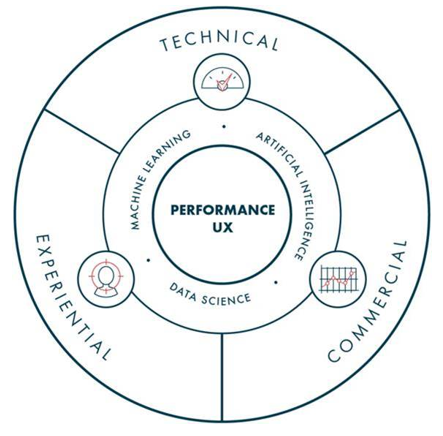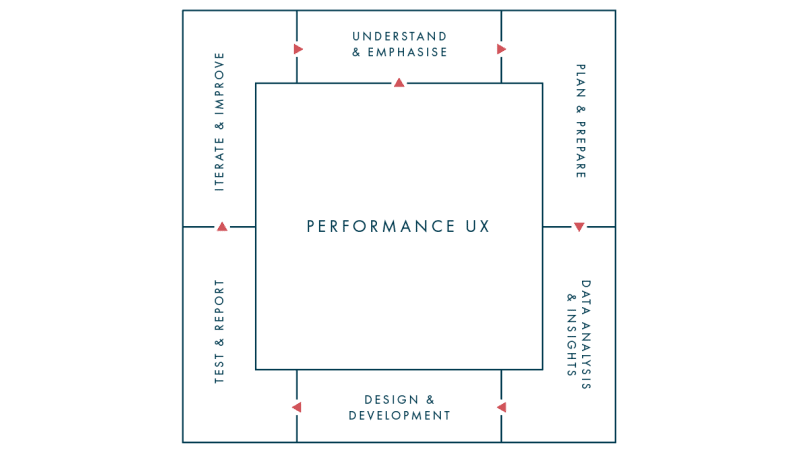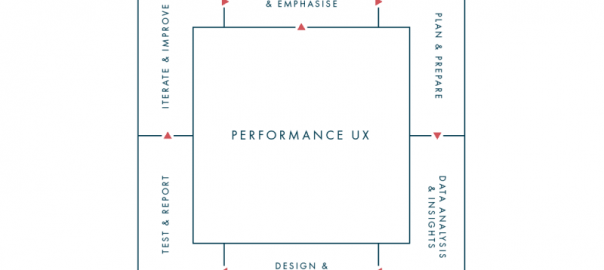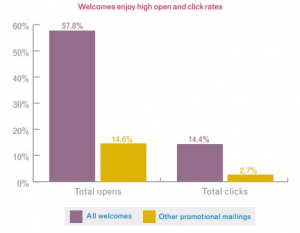Performance UX (PUX) is an ongoing system of design improvements that increase conversion rates and other KPIs. Instead of running isolated CRO campaigns, our PUX service continues to optimise your website and digital products for the long-term by improving usability, removing conversion barriers and increasing incentive.
In an environment where your brand and target audiences are constantly evolving, PUX keeps your goals business objectives at the centre of every design change. Which means you can prioritise changes that have the largest positive impact and avoid wasting resources on those that don’t.
What is Performance UX?
Performance UX continuously optimises your digital products (website, app, etc.) for conversions and other KPIs. Our software Apollo Insights constantly monitors performance, extracts insights and finds new opportunities to improve your site, based on real-time user data.
This process is entirely automated, pulling in performance data from your products and dozens of third-party analytics tools to provide a complete 360-degree view.
This means our PUX team spends less time crunching numbers and more time implementing design changes that improve the performance of your digital products – conversions, lead value, profit, customer lifetime value, etc.
How does Performance UX help?
Performance UX puts your business objectives at the heart of every optimisation campaign. It focuses on improving the usability, capability and efficiency of your website and other products. There are three key areas our PUX team works on to ensure everything on your website is contributing to your business objectives.
- Experiential: Direct focus on improving usability, increasing engagement and meeting user expectations.
- Technical: A fast, responsive and effective digital platform for the user.
- Commercial: Make sure users convert with the best possible experience.

3 key areas of Performance UX
Anything that isn’t helping you achieve your goals and be optimised to fix this or removed entirely so they no longer compromise performance.
What kind of business objectives can it improve?
Our Performance UX services don’t focus on a single business objective. Our PUX audits determine the primary, secondary and tertiary goals of your website and its individual pages to create a full map of performance across your entire site.
For example, your primary goal might be as simple as maximising profit. Your secondary goals might include maximising sales of your most profitable products and improving the quality of leads while reducing lead dropouts and returned products. Then, your tertiary goals might focus more on increasing conversions, maximising engagement and improving the relevance of traffic coming to your website.
This approach allows our PUX team to pinpoint the metrics and KPIs relevant to your goals and prioritise them. This prevents optimisation campaigns for tertiary goals (eg: increasing conversion rates) from compromising more important objectives, such as the quality of your leads. This is a common example of where pure CRO can be counterproductive if it results in generating a higher volume of lower quality leads.
How is PUX different from UX design and CRO?
UX design and conversion rate optimisation (CRO) are fundamental parts of PUX and, in many ways, our Performance UX service brings them together. We believe usability should be at the heart of every optimisation campaign so we make sure UX and CRO are working together, in the same direction.
Why is this important?
Well, it might sound counterintuitive, but creating the “best” UX doesn’t always get the best results from a business perspective. An obvious example of this is popups, which make a mockery of UX design principles but remain a popular strategy. I’m not a fan myself but a lof businesses are happy to take the UX hit in return for a conversion boost.
There are more subtle instances of this, too.
Form best practices generally tell us to use the minimum number of fields necessary to minimise friction and maximise conversions. However, in practice, you’ll often find longer forms outperform shorter versions, even if the overall UX is theoretically worse.

The other key principle of PUX is that, as important as conversions are, they’re not the only performance indicator that matter. For example, a lower conversion rate can actually be more profitable if you’re able to increase the relevance of those conversions and the likelihood of them turning into paying customers. In some cases, conversions might not even be a primary goal at all, such as a campaign designed to increase brand awareness.
Performance UX prioritises your business objectives. This establishes the right balance between UX principles and CRO targets for your user base without limiting your optimisation efforts to conversions as the only KPI.
What does the Performance UX process look like?
The Performance UX process starts with an audit of your digital products to determine your business goals and their current performance levels. Next, our Apollo Insights platform will pull all of the relevant data into a single reporting system that provides a complete overview of performance and allows our PUX team to pinpoint opportunities for improvement.
Then our PUX team confirms which of these opportunities will have the strongest positive impact and then puts a strategy in place to implement them.
Six key stages of this process
- Understand & Empathise: Getting to the bottom of your target audiences needs and any problems they might experience on your website.
- Plan & Prepare: Putting a strategy in place to ensure these demands are met and negative friction points are removed.
- Data Analysis & Insights: In-depth analysis of your site’s performance and user actions to determine how effectively you’re currently achieving your goals and reveal opportunities for improvement.
- Design & Development: Implementing design and development to realise the improvement opportunities revealed in step 3.
- Test & Report: All design and development changes are thoroughly tested to ensure they have a positive impact.
- Iterate & Improve: All design and development changes are then refined further, based on our initial testing, to achieve maximum performance.
 Performance UX process
Performance UX process
Our Performance UX doesn’t finish at stage six. This is a cyclical strategy that repeats through each stage to keep your business adapting to new user demands, emerging target audiences and your business objectives as they change – and constantly improving all the way.
How do we find opportunities for improvement?
Apollo Insights allows us to automate data collection on a mass scale, pulling in your website’s performance metrics and third-party audience data from multiple sources into a single dashboard. So, instead of switching between dozens of analytics tools and reports for manual comparisons, Apollo brings all of this data together and creates visualisations that allow our team to extract powerful insights in seconds, rather than hours or days.
Speed isn’t the only advantage, either. Apollo improves the accuracy of insights and prevents anything from being missed.
This doesn’t mean our entire analysis and insights process is automated, though. Our PUX team runs a number of manual tests to get a deeper understanding of how your website is performing, including:
- User journey
- Device usage
- User demographic
- Bounce rates
- Conversion rates
- Clicks
- Scrolls
- Taps
- Recording sessions
- Popular search terms (Apollo insights)
- Popular ads being run (Apollo insights)
- User comments – reviews & surveys
- Moderated and unmoderated testing
By automating as much of the analysis process as possible, our team spends more time carrying out meaningful tests instead of manually entering data and creating reports. They can also dive right into cross-referencing reports to analyse the relationship between metrics and KPIs – for example, loading times and content length vs bounce rates, time on page and conversions. This is important because you don’t want to get bogged down in, say, speed optimisation without knowing that it’s going to have enough of a positive impact to justify the initial investment of time and resources.
Digital & Social Articles on Business 2 Community
(33)
Report Post





